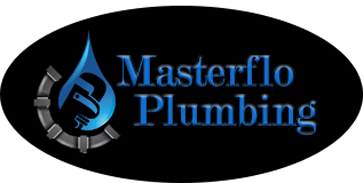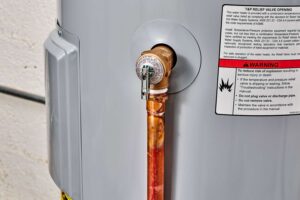To tackle pipe leaks effectively, start by inspecting pipes for moisture, corrosion, and signs of leaks. Look out for water stains, mold growth, or peeling paint near pipes while feeling for wet spots or soft areas. Turn off the water supply at the main shut-off valve and select the appropriate repair method based on the damage. For temporary fixes, pipe clamps or repair wraps work wonders, but epoxy putty, soldering, or pipe tape provide more permanent solutions. Take proactive steps in preventing future leaks by implementing regular maintenance checks. Expert recommendations offer valuable insights into resolving pipe leaks promptly.
Key Takeaways
- Assess the leak size, location, and impact on the plumbing system.
- Choose the appropriate repair method based on pipe material and damage.
- Consider temporary solutions like pipe clamps or repair wraps for quick fixes.
- Opt for durable options like epoxy putty or soldering for permanent repairs.
- Prevent future leaks through regular maintenance, inspections, and proactive measures.
Identifying the Leak Location
To pinpoint the leak location accurately, start by inspecting all visible pipes for signs of moisture or corrosion. Check for any water stains, mold growth, or peeling paint near the pipes, as these could indicate a leak. Feel along the pipes for any wet spots or soft areas, as these are common signs of a leaking pipe. Use a flashlight to closely examine areas that are less visible, such as under sinks or behind appliances.
Once you have identified a potential leak location, mark the area with a piece of tape or a small sticker. This will help you keep track of the spot when you move on to the next steps of repairing the leak. Remember that even a small, slow leak can cause significant damage over time, so it is essential to address the issue promptly.
Assessing the Leak Severity
Evaluation of the leak severity is crucial in determining the extent of damage and the urgency of repair. When appraising a pipe leak, consider the size of the leak, the rate of water flow, and the location of the leak. A small, slow leak may indicate a minor issue that can be easily fixed, while a large, fast leak could indicate a more serious problem requiring immediate attention. Look for signs of water damage such as wet spots, mold growth, or water stains, as these can help gauge the extent of the leak and its potential impact on your property.
Additionally, analyze whether the leak is causing any structural damage or compromising the integrity of your home. Leaks near electrical outlets or appliances pose a safety hazard and should be addressed promptly. If the leak is affecting the water pressure or quality in your home, it may indicate a more significant issue within your plumbing system. By accurately evaluating the severity of the leak, you can determine the necessary steps to effectively repair the damage and prevent future issues.
Turning Off the Water Supply
It is crucial to quickly and effectively turn off the water supply in case of a pipe leak emergency. When faced with a pipe leak, the first step is to locate your home's main water shut-off valve. Typically, this valve is situated near the water meter or where the main water line enters your home. In most cases, turning the valve clockwise will shut off the water supply. Remember, righty-tighty, lefty-loosey. If the leak is from a specific fixture, like a sink or toilet, you can also shut off the water supply to that fixture by using the individual shut-off valves located nearby.
Knowing the location of these valves and ensuring they are easily accessible can save you valuable time during a pipe leak emergency. It is important to familiarize yourself with the main shut-off valve's location before a crisis occurs to prevent extensive water damage to your property. By promptly turning off the water supply, you can minimize the impact of a pipe leak and buy yourself time to assess the situation and plan for repairs.
Choosing the Right Repair Method
When facing a pipe leak, your priority is to assess the damage and select the most appropriate repair method to address the issue promptly. There are several factors to take into account when choosing the right repair method. First, identify the location and size of the leak. For small leaks, using a pipe clamp or a pipe repair wrap may be adequate. These methods are quick fixes that can provide temporary solutions until a permanent remedy is implemented. However, for larger leaks or more serious damage, it may be necessary to replace a section of the pipe entirely. This is a more labor-intensive process but guarantees a **lasting repair. Additionally, consider the material of the pipe and the surrounding environment**. Certain repair methods may be more suitable for specific pipe materials or locations. By carefully evaluating these factors, you can select the repair method that best addresses the pipe leak issue effectively.
Repairing With Epoxy Putty
Consider using epoxy putty as a reliable solution for repairing pipe leaks efficiently. Epoxy putty is a versatile and easy-to-use option for fixing leaks in both metal and PVC pipes. Here are some key benefits and tips for using epoxy putty effectively:
- Seals Leaks Quickly: Epoxy putty can create a strong and durable seal around the leaking area, stopping the flow of water in no time.
- No Special Tools Required: You can apply epoxy putty with just your hands, making it a convenient solution for emergency repairs.
- Works on Wet Surfaces: Unlike some other repair methods, epoxy putty can adhere to wet surfaces, allowing you to fix leaks even when the pipe is not completely dry.
- Resistant to High Pressure and Temperatures: Epoxy putty is designed to withstand high pressure and temperatures, ensuring a long-lasting repair solution for your pipes.
Using Pipe Clamps for Quick Fixes
For quick fixes on pipe leaks, utilizing pipe clamps is a practical and efficient solution. When faced with a sudden pipe leak, having pipe clamps on hand can save you time and money. These clamps work by sealing off the leaking area, providing a temporary fix until a more permanent solution can be implemented. To use a pipe clamp, first, shut off the water supply to the affected pipe. Then, position the clamp over the leak and tighten it securely to stop the flow of water. Pipe clamps are versatile and can be used on various types of pipes, including copper, PVC, and steel. They are readily available at hardware stores and are easy to install without the need for special tools. While pipe clamps offer a quick fix, it's important to remember that they are temporary solutions. For a more permanent fix, consider soldering the pipe or replacing the damaged section altogether.
Soldering for Permanent Solutions
To achieve a permanent solution for pipe leaks, soldering is a reliable method that guarantees a lasting fix. Soldering creates a strong, leak-proof bond between pipes, ensuring that your repairs withstand the test of time. Here are some key tips to help you successfully solder your pipes:
- Prepare the Surface: Clean the pipes thoroughly to remove any dirt, grease, or corrosion that could impact the soldering process.
- Apply Flux: Use flux to help the solder adhere to the pipes and create a secure seal.
- Heat Evenly: Heat the joint evenly to make certain that the solder melts and flows smoothly around the connection.
- Practice Safety: Remember to wear protective gear, such as gloves and goggles, when soldering to prevent burns and injuries.
Applying Pipe Tape or Sealant
To ensure proper application of pipe tape or sealant, start by making sure that the pipe surface is clean and dry. Clean the area around the leak using a rag and some degreasing cleaner to eliminate any dirt, grease, or residue that could hinder the tape or sealant from adhering effectively. Once the surface is spotless, dry it thoroughly with a clean towel to guarantee a tight bond.
Next, if you're using pipe tape, wrap it securely around the pipe in the direction of the threads. Be sure to overlap the tape slightly as you progress to create a firm seal. For pipe sealant, apply it generously around the leaking area, spreading it evenly with a brush or your finger.
After applying the tape or sealant, allow it sufficient time to set and cure as per the manufacturer's instructions. Once it's dry, turn on the water supply to check for any remaining leaks. Keep in mind, pipe tape and sealant are temporary solutions and may need periodic reapplication to uphold their effectiveness.
Replacing Damaged Pipe Sections
When addressing damaged pipe sections, assess the extent of the damage and determine the best course of action for replacement. Here are some steps to guide you through the process:
- Identify the damaged section: Thoroughly inspect the pipes to locate the specific area that needs replacement.
- Measure the pipe: Take precise measurements to guarantee you get the right size and type of replacement pipe.
- Turn off the water: Before commencing the replacement process, make sure to disable the water supply to prevent any further leaks or damage.
- Use proper tools: Utilize appropriate tools such as pipe cutters, wrenches, and sealants to safely remove the damaged section and install the new pipe.
Following these steps will help you effectively replace damaged pipe sections and restore the integrity of your plumbing system.
Preventing Future Leaks
To enhance the longevity of your plumbing system and prevent future leaks, implement regular maintenance checks and proactive measures. Conduct routine inspections of your pipes to catch any signs of wear and tear early on. Look for corrosion, rust, or any unusual bulging in the pipes. Addressing these issues promptly can prevent small leaks from turning into major problems. Additionally, consider installing a water softener to reduce the corrosive effects of hard water on your pipes. This simple step can go a long way in preventing leaks caused by mineral buildup and corrosion. Insulating your pipes in areas prone to freezing can also help prevent cracks and leaks due to expanding frozen water. By taking these proactive measures and staying watchful with maintenance checks, you can greatly reduce the risk of future pipe leaks and make sure the smooth operation of your plumbing system for years to come.
Conclusion
Masterflo Plumbing is North Georgia's most trusted plumbing company. With over 20 years of experience and staffed with master plumbers, our team is equipped and ready to serve your plumbing needs. From water heater repair or replacement to minor and major plumbing problems, you can count on Masterflo Plumbing for all your plumbing needs throughout Cherokee County and metro Atlanta.


No comment yet, add your voice below!